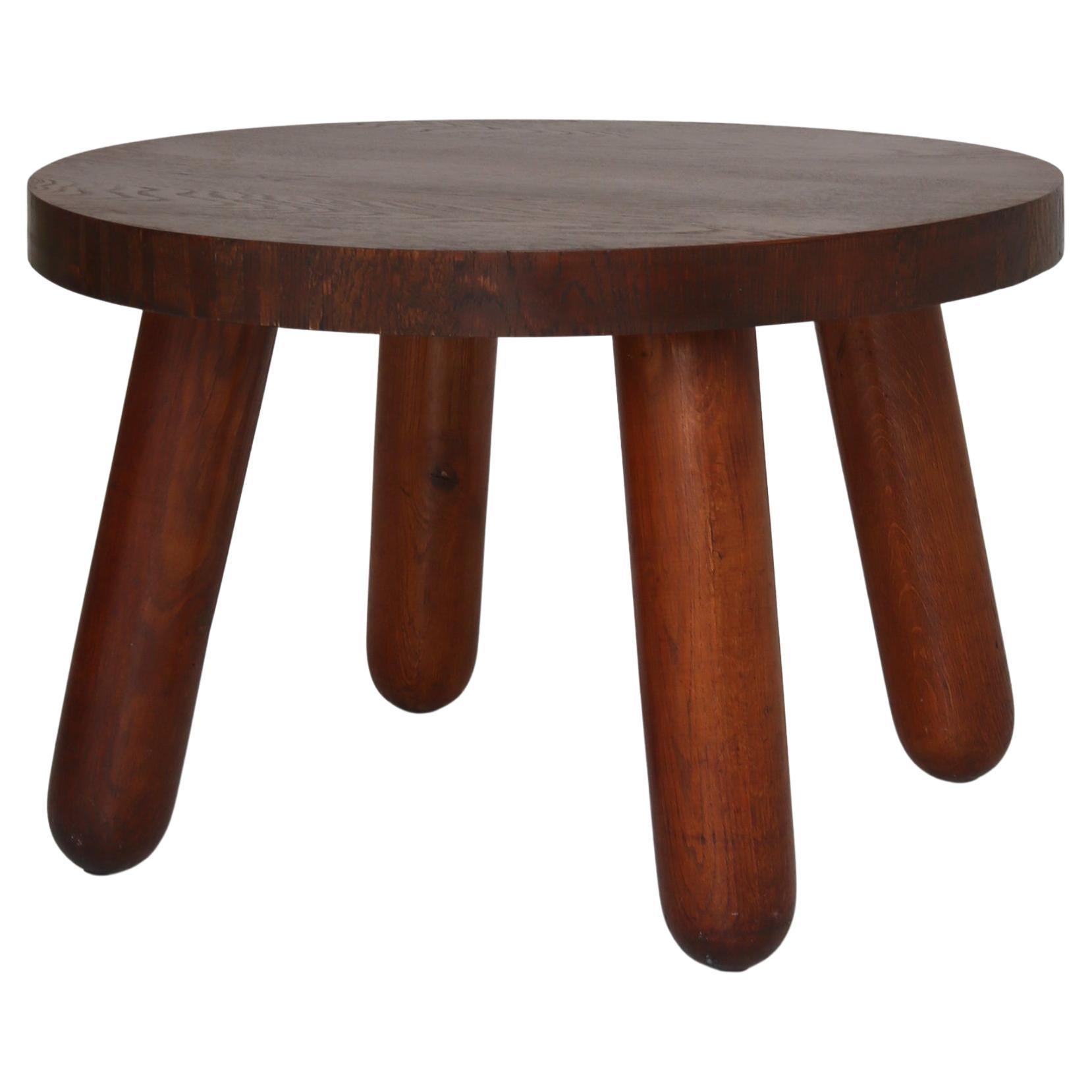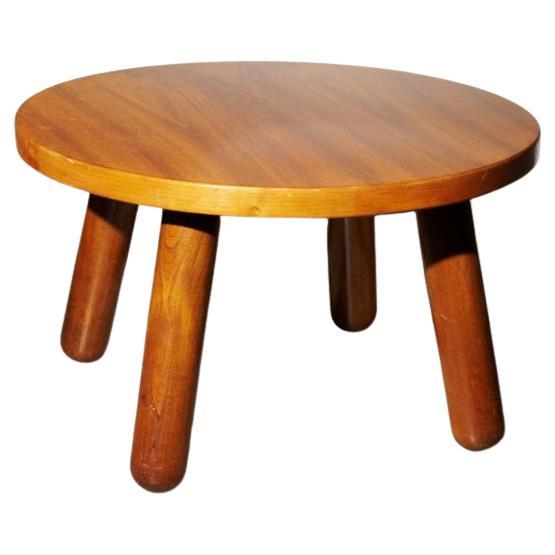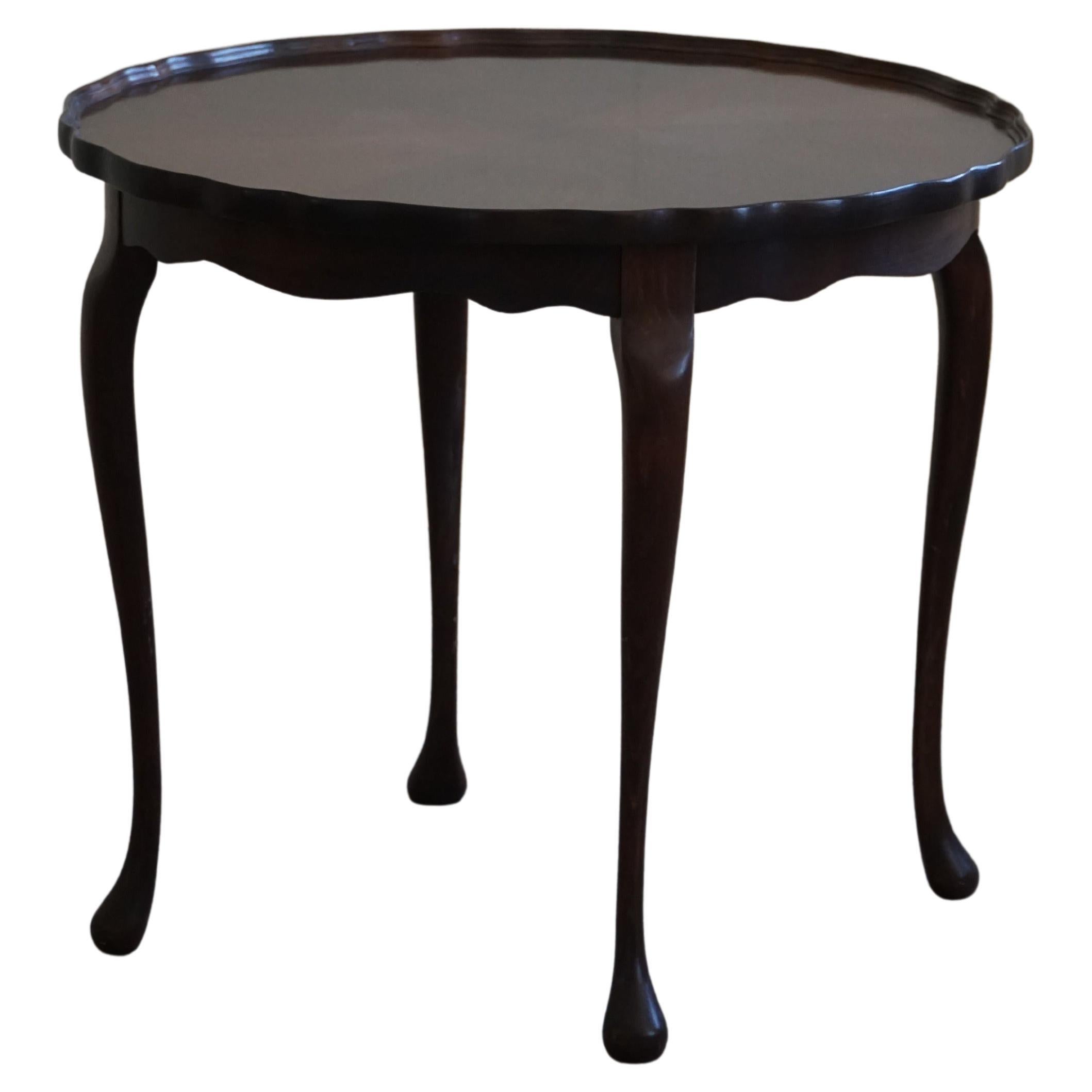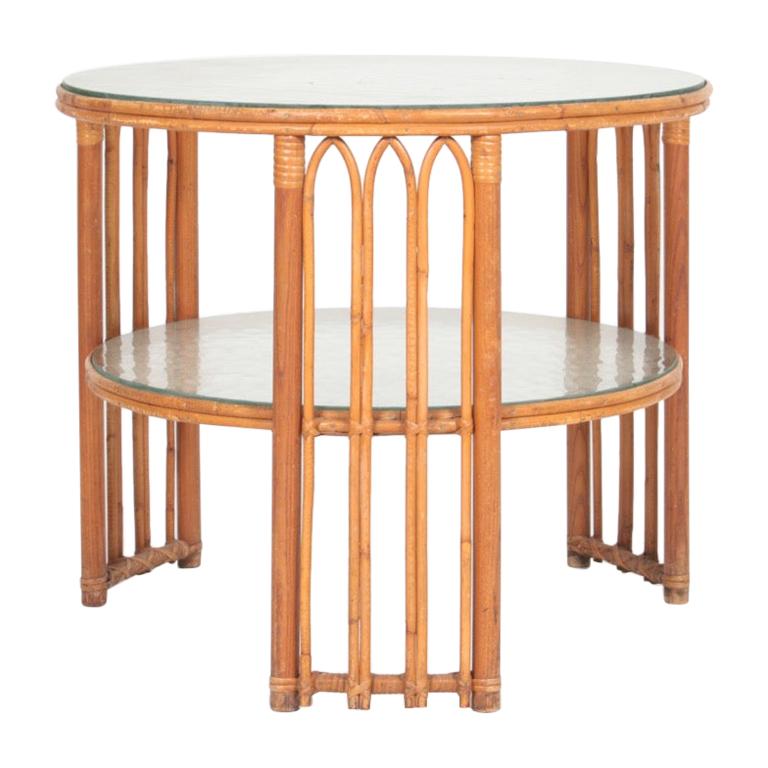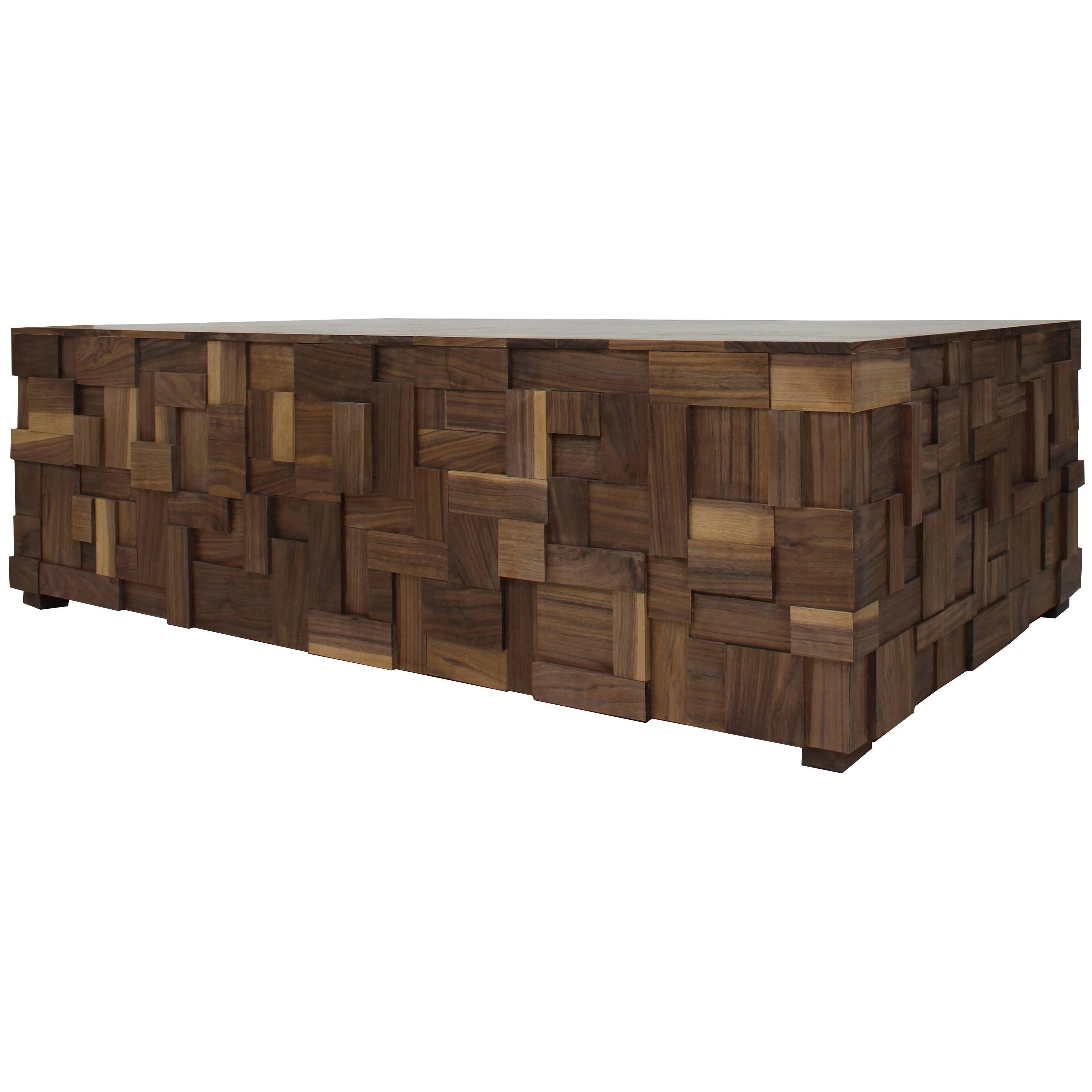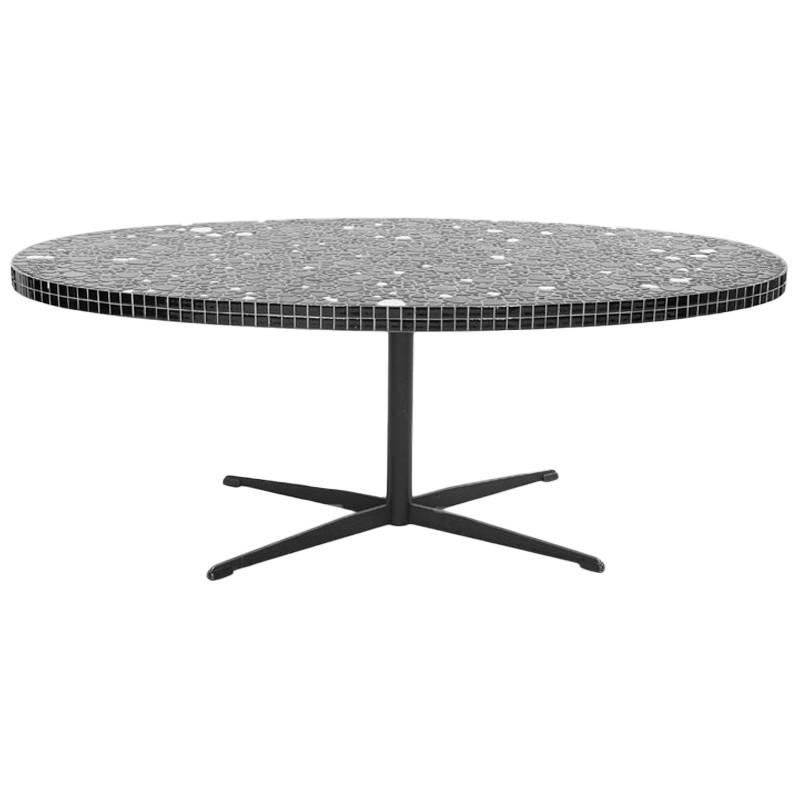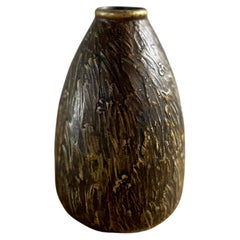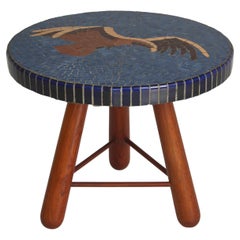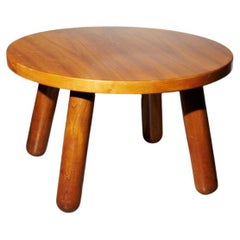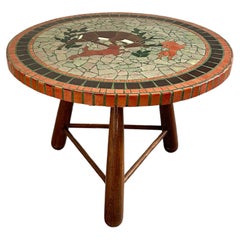
Decorative Otto C Jensen Side Table with Mosaic and Stained Elm, Denmark 1940’s
View Similar Items
Want more images or videos?
Request additional images or videos from the seller
1 of 8
Decorative Otto C Jensen Side Table with Mosaic and Stained Elm, Denmark 1940’s
About the Item
- Dimensions:Height: 29.53 in (75 cm)Diameter: 21.26 in (54 cm)
- Style:Art Deco (Of the Period)
- Materials and Techniques:
- Place of Origin:
- Period:
- Date of Manufacture:1940
- Condition:Refinished. Wear consistent with age and use.
- Seller Location:Valby, DK
- Reference Number:1stDibs: LU6559236665822
About the Seller
5.0
Vetted Seller
These experienced sellers undergo a comprehensive evaluation by our team of in-house experts.
1stDibs seller since 2022
25 sales on 1stDibs
More From This SellerView All
- Evan Jensen Bronze Vase, Denmark, 1930sBy Evan JensenLocated in Valby, 84Rare bronze vase attributed Evan Jensen made in Denmark in the 1930s. The vase is made by a unknown danish caster called Antika but is a typical Evan Jensen shaped vase and has typical Evan Jensen detail. The vase is in good condition with a beautiful original patina. Art Deco, short for the French Arts Décoratifs, and sometimes just called Deco, is a style of visual arts, architecture, and product design, that first appeared in France in the 1910s (just before World War I), and flourished in the United States and Europe during the 1920s and 1930s. Through styling and design of the exterior and interior of anything from large structures to small objects, including how people look (clothing, fashion and jewelry), Art Deco has influenced bridges, buildings (from skyscrapers to cinemas), ships, ocean liners, trains, cars, trucks, buses, furniture, and everyday objects like radios and vacuum cleaners. It got its name after the 1925 Exposition internationale des arts décoratifs et industriels modernes (International Exhibition of Modern Decorative and Industrial Arts) held in Paris. Art Deco combined modern styles with fine craftsmanship and rich materials. During its heyday, it represented luxury, glamour, exuberance, and faith in social and technological progress. From its outset, Art Deco was influenced by the bold geometric forms of Cubism and the Vienna Secession; the bright colours of Fauvism and of the Ballets Russes; the updated craftsmanship of the furniture of the eras of Louis XVI and Louis Philippe I; and the exoticized styles of China, Japan, India, Persia, ancient Egypt and Maya art. It featured rare and expensive materials, such as ebony and ivory, and exquisite craftsmanship. The Empire State Building, Chrysler Building, and other skyscrapers of New York City built during the 1920s and 1930s are monuments to the style. In the 1930s, during the Great Depression, Art Deco became more subdued. New materials arrived, including chrome plating, stainless steel and plastic. A sleeker form of the style, called Streamline Moderne, appeared in the 1930s, featuring curving forms and smooth, polished surfaces. Art Deco is one of the first truly international styles, but its dominance ended with the beginning of World War II and the rise of the strictly functional and unadorned styles of modern architecture and the International Style of architecture that followed. This vase is the perfect detail for any interior from the modern Wabi Sabi style...Category
Vintage 1920s Danish Scandinavian Modern Vases
MaterialsBronze
- Evan Jensen Bronze Vase, Denmark, 1930sBy Evan JensenLocated in Valby, 84Evan Jensen bronze art deco vase made by Danish artist Evan Jensen in the 1930s. The vase is in a beautiful original condition and is signed Evan Jensen København Bronze and has model number 155A. The vase is a beautiful decorative element to any interior and the structure of the vase is fantastic with lots of details which will give you endless hours of enjoyment looking at. Art Deco, short for the French Arts Décoratifs, and sometimes just called Deco, is a style of visual arts, architecture, and product design, that first appeared in France in the 1910s (just before World War I), and flourished in the United States and Europe during the 1920s and 1930s. Through styling and design of the exterior and interior of anything from large structures to small objects, including how people look (clothing, fashion and jewelry), Art Deco has influenced bridges, buildings (from skyscrapers to cinemas), ships...Category
Vintage 1930s Danish Scandinavian Modern Vases
MaterialsBronze
- Evan Jensen Bronze Vase, Denmark 1930’sBy Evan JensenLocated in Valby, 84bronze vase by Evan Jensen, crafted in Denmark during the 1930s. Renowned for his mastery of bronze work and innovative designs, Jensen’s pieces are highly sought after by collectors and enthusiasts alike. This stunning vase showcases Jensen’s exceptional craftsmanship and artistic vision, with its graceful silhouette and intricate detailing. The rich patina of the bronze adds depth and character to the piece, while the organic forms and geometric accents create a harmonious balance of tradition and modernity. Standing as a testament to the golden age of Danish design, this vase embodies the principles of Scandinavian craftsmanship and aesthetic refinement. Its versatile design allows it to effortlessly complement a variety of interior styles, from Art Deco to contemporary. Whether displayed as a standalone statement piece or adorned with fresh flowers, this Evan Jensen bronze...Category
Vintage 1930s Danish Scandinavian Modern Vases
MaterialsBronze
- Evan Jensen Bronze Dish, Denmark, 1930sBy Evan JensenLocated in Valby, 84Bronze Art deco dish/charger by Danish artist Evan Jensen from the 1930's in a beautiful original condition, the dish is signed Evan Jensen Copenhagen Bronze and has model number 320. The dish has a very decorative image of a deer on the front. The dish is the perfect dish to have standing as a piece of art but can also be used as a bowl to store stuff like fruit or nuts or whatever else you could think of. Art Deco, short for the French Arts Décoratifs, and sometimes just called Deco, is a style of visual arts, architecture, and product design, that first appeared in France in the 1910s (just before World War I), and flourished in the United States and Europe during the 1920s and 1930s. Through styling and design of the exterior and interior of anything from large structures to small objects, including how people look (clothing, fashion and jewelry), Art Deco has influenced bridges, buildings (from skyscrapers to cinemas), ships, ocean liners, trains, cars, trucks, buses, furniture, and everyday objects like radios and vacuum cleaners. It got its name after the 1925 Exposition internationale des arts décoratifs et industriels modernes (International Exhibition of Modern Decorative and Industrial Arts) held in Paris. Art Deco combined modern styles with fine craftsmanship and rich materials. During its heyday, it represented luxury, glamour, exuberance, and faith in social and technological progress. From its outset, Art Deco was influenced by the bold geometric forms of Cubism and the Vienna Secession; the bright colours of Fauvism and of the Ballets Russes; the updated craftsmanship of the furniture of the eras of Louis XVI and Louis Philippe I; and the exoticized styles of China, Japan, India, Persia, ancient Egypt and Maya art. It featured rare and expensive materials, such as ebony and ivory, and exquisite craftsmanship. The Empire State Building, Chrysler Building, and other skyscrapers of New York City built during the 1920s and 1930s are monuments to the style. In the 1930s, during the Great Depression, Art Deco became more subdued. New materials arrived, including chrome plating, stainless steel and plastic. A sleeker form of the style, called Streamline Moderne, appeared in the 1930s, featuring curving forms and smooth, polished surfaces. Art Deco is one of the first truly international styles, but its dominance ended with the beginning of World War II and the rise of the strictly functional and unadorned styles of modern architecture and the International Style of architecture that followed. This dish is the perfect detail for any interior from the modern Wabi Sabi style...Category
Vintage 1930s Danish Scandinavian Modern Decorative Dishes and Vide-Poche
MaterialsBronze
- Organic Swedish Bowl in Elm Root Wood, 1940sLocated in Valby, 84Rare organic wooden bowl made in Sweden in the 1940s in solid Elm root wood. The bowl is the perfect decorative touch for any interior and can be used for things like nuts or just as a decorative object in your interior. The bowl is very typical wabi Sabi style but also reminds you of pieces from the Almue period. The concept of Wabi-sabi developed from Zen Buddhist...Category
Vintage 1940s Swedish Scandinavian Modern Decorative Bowls
MaterialsElm
- Flamed Birch Coffe Table Sweden, 1950sBy Josef FrankLocated in Valby, 84Rare and important elegant Swedish coffe table in Flamed birch and birch by an unknown Swedish manufacturer, the table is very similar to pieces by Austrian/Swedish designer Josef Fr...Category
Vintage 1950s Swedish Scandinavian Modern Coffee and Cocktail Tables
MaterialsBirch
You May Also Like
- Round side Table, Otto Færge in Stained Elm & Blue Mosaic Tiles, Denmark, 1940By Otto Færge 1Located in Odense, DKAmazing modernist side or coffee table made by Danish cabinetmaker Otto Færge in the 1940s. The oval table top is decorated by the artist Paul Hedegård with a mosaic depicting an eagle on a deep blue background of ceramic tiles. The big chunky club shaped legs...Category
Vintage 1940s Danish Art Deco Side Tables
MaterialsCeramic, Elm
- Chunky Danish Modern Side Table in Stained Oak by Otto Færge, Denmark, 1940sBy Otto Færge 1Located in Odense, DKEarly and important circular coffee table made of oak with solid club shaped legs. These tables were made in small numbers on special order by cabinet...Category
Vintage 1940s Danish Scandinavian Modern Side Tables
MaterialsOak
- Coffee Table in Nutwood and Stained Elm by Otto FaergeBy Otto Færge 1Located in Berlin, BECoffee table in nutwood and stained elm by Otto Faerge. Circular coffee table of nutwood with solid legs of stained elm. This example made 1940s by cabinetmaker Otto Færge. Add...Category
20th Century European Coffee and Cocktail Tables
MaterialsNutwood
- Danish Art Deco Side Table / Coffee Table in Stained Beech, 1940sLocated in Odense, DKA lovely Art Deco side table / pedestal in stained beech. Made by a Danish Cabinetmaker in the 1940s. Elegant design and in a good vintage condition. "There is no style like art ...Category
Mid-20th Century Danish Art Deco Coffee and Cocktail Tables
MaterialsBeech
- Otto Færge Round Coffee Table in Oak, Denmark, 1940sBy Otto Færge 1Located in The Hague, NLThis very rare low table was designed and made by the cabinetmaker Otto Færge in Denmark in the 1940s. The round table with a top made of veneered oak wood, displaying a distinct and attractive wood grain. The slightly outwarding bending club shaped legs...Category
Vintage 1940s Danish Scandinavian Modern Coffee and Cocktail Tables
MaterialsOak
- Swedish Elm And Elm Root Table, Circa 1940sBy Reiners MöblerLocated in New York, NYA Swedish Modern elm and elm root table, probably by Reiners Mjölby, Circa 1940s, the rectangular top with a rounded end, the center with an elm root ve...Category
Vintage 1940s Swedish Scandinavian Modern Coffee and Cocktail Tables
MaterialsElm
Recently Viewed
View AllMore Ways To Browse
Dark Stained Table
1950s Italian Coffee Table
Cocktail Bench
Black Marble Table Green
Small Glass Top Coffee Table
Organic Modern Style Coffee Table
Stone Coffee Table And Side Table
Pair Black Coffee Table
1920 Coffee Table
Brass Black Marble Coffee Table
Mid Century Italian Brass And Glass Coffee Table
Modern Coffee Table Rectangle
Coffee Table Brass Metal Base
Coffee Table Leaves
Wood Coffee Table Minimalist Modern
Large Marble Top Coffee Table
Leaf Design Coffee Table
Mid Century Red Coffee Table

